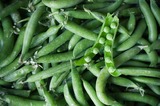
This resource provides a summary of common preconceptions and misconceptions in Life Science.
- Subject:
- Living Systems and Processes
- Science
- Material Type:
- Teaching/Learning Strategy
- Author:
- Anne Petersen
- Myra Thayer
- Date Added:
- 07/16/2021

This resource provides a summary of common preconceptions and misconceptions in Life Science.

This resource is a remix from Illustrative Mathematics https://tasks.illustrativemathematics.org/content-standards/tasks/1086.Considering the original resource, there are a few suggestions added to the remix. Modification 1 - Instead of providing students one type of bean ( as originally stated), it would allow curiosity if students were provided with an assorted selection of beans/seeds like sunflower seed, carrot seed, peas and bean, along with which the unifix cubes can be color-coded for each bean/seed. This would benefit all types of learners as they will be able to visualize and build a concrete conceptual understanding of the content. Modification 2 - This modification allows students to choose the unit of measure and provide them with different types of ruler ( mm, cm and inches), promoting mathematical discourse on customary and metric conversions as they engage in selecting the appropriate unit of measure. This allows students to identify the unit of measure in an active learning environment. As teachers incorporate these two modifications, it allows students to develop a growth mindset by understanding how mathematics and science go hand in hand, encouraging literacy within the curriculum.

Make life cycles and data recording “egg”-citing! Incubate eggs in your classroom. As you do, monitor and record data.

Students will gain experience and knowledge using technology while learning. They will learn how to solve their tech problems and learn about the pumpkin life cycle!

This lesson connects the invention of the x-ray by Tesla to the artwork of Austrailian Aboriginals.